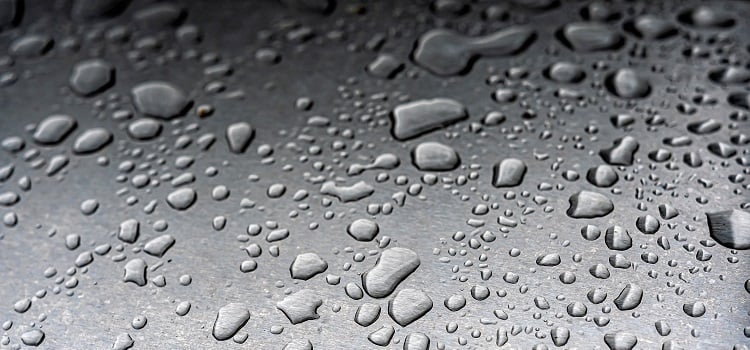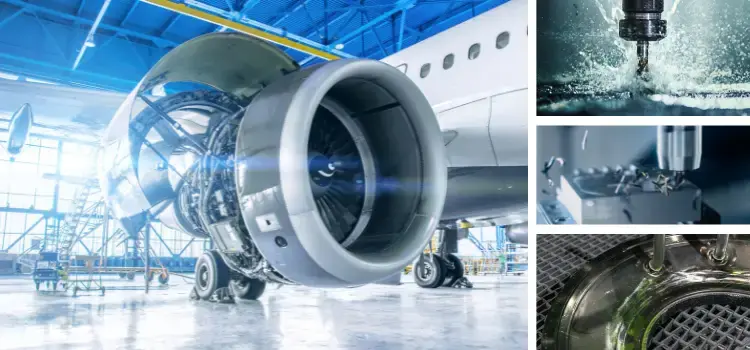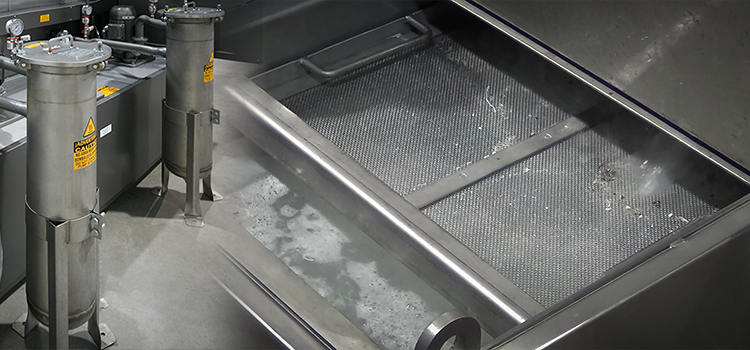Aqueous cleaning is widely used in metal cleaning due to its ease of implementation, effectiveness, and low environmental impact. Alkaline-based aqueous cleaning is used to degrease metal surfaces and remove tenacious soils; however, it can sometimes leave behind undesirable residues. To ensure both quality and safety, rinsing is required to achieve high levels of cleanliness. Recirculated rinses are a cost-effective way to remove detergent residues effectively. They use separate tanks, pumps, heating mechanisms, and spray headers to recirculated hot rinse water, resulting in lower energy costs and water usage.
WHY IS RINSING IMPORTANT?
The primary purpose of rinsing is to remove detergent or chemical residues that can interfere with subsequent processes and/or bring about skin irritations during handling. Rinsing produces a cleaner surface that meets specifications and requirements, minimizes the occurrence of rejection, and prepares the part for coatings, adhesives, plating, painting, etc. Proper rinsing helps maintain an uninterrupted processing line. It will also help you conserve water and reduce the demand on the waste treatment system.
Without rinsing, your line's productivity can be significantly diminished, driving up operating costs and rejection rates.
HOW MANY RINSE TANKS DO YOU NEED?
A single rinse tank is adequate for most cleaning processes and is sometimes the maximum space availability can permit. Ideally, however, to reduce water usage, at least two if not three rinses are required. As each subsequent rinse tank will be cleaner than the last, a higher level of rinsing can be achieved. More than three will start to present a reduction in cost-effectiveness due to lost floor space and related expenses, but additional tanks provide a significant decrease in water usage. With a single rinse tank, freshwater is overflowed, or the entire tank is dumped more often to ensure rinse quality. Either way, this results in more water being used compared to multiple rinse tanks.
Counter-flow rinsing is a method that introduces fresh water into the last rinse tank and cascades it back into the first, so the rinse water becomes cleaner in each subsequent rinse tank. Further to cascading, using the first rinse to replenish evaporation losses in the process tank will also reduce detergent and water costs.
INCOMING WATER QUALITY
The quality of rinse water will affect the rinse's effectiveness because contaminants in the water can be left behind after evaporation. The calcium and magnesium salts in hard water can leave mineral deposits on the workpieces, react with fatty acids to form “soap scum," and leave scale on your equipment. Mineral deposits not only affect the cleanliness of the workpieces but they can cause corrosion on steel. These residues can cause issues in subsequent processing of the workpieces, like blistering under the paint. Measuring the conductivity of your incoming water can tell you if your water is clean enough.
RINSE TANK CONTAMINATION
The source of most of the contamination in rinse tanks is drag-out from the preceding tank. Higher production levels create higher drag-out, so if you don’t have a method of maintaining a high quality of water in your rinse tanks, you’re forced to use more water and/or sacrifice quality. Fresh incoming water keeps rinse tanks clean and clear of contamination. A closed-loop distillation process like Mechanical Vapor Recompression Evaporation (MVRE) or deionization process such as di-resin tanks can be used to reduce water use. These processes continuously remove dissolved solids from the rinse water, which can be confirmed with a conductivity meter.
Using MVRE and monitoring conductivity allows you to maximize your productivity without worrying about drain contamination.
MECHANICAL VAPOR RECOMPRESSION EVAPORATION
MVRE is a method of purifying water that is underutilized in the metal fabricating and finishing industry. It’s used to desalinate seawater, concentrate juices, and treat large-scale industrial wastewater. The technology has evolved as increasing energy costs, decreasing freshwater resources, and growing environmental sensitivity call for more sustainable water treatment methods.
MVRE recovered water can be used in industrial applications like rinse water, feedwater, or disposed of into sewage or recycling. Automated commercial units can process up to 500 gph and have no emissions other than the concentrated waste.
IMPROVE RESULTS WITH LESS WATER
For many general-purpose cleaning and rinsing requirements, the final rinse should not exceed 600 microsiemens/cm2 total dissolved solids. Much above, this would indicate that salts are being redeposited back onto the part rather than leaving a clean, residue-free surface.
Dissolved salts increase conductivity. Using a conductivity controller to trigger the addition of fresh water to the rinse can also help preserve water.



